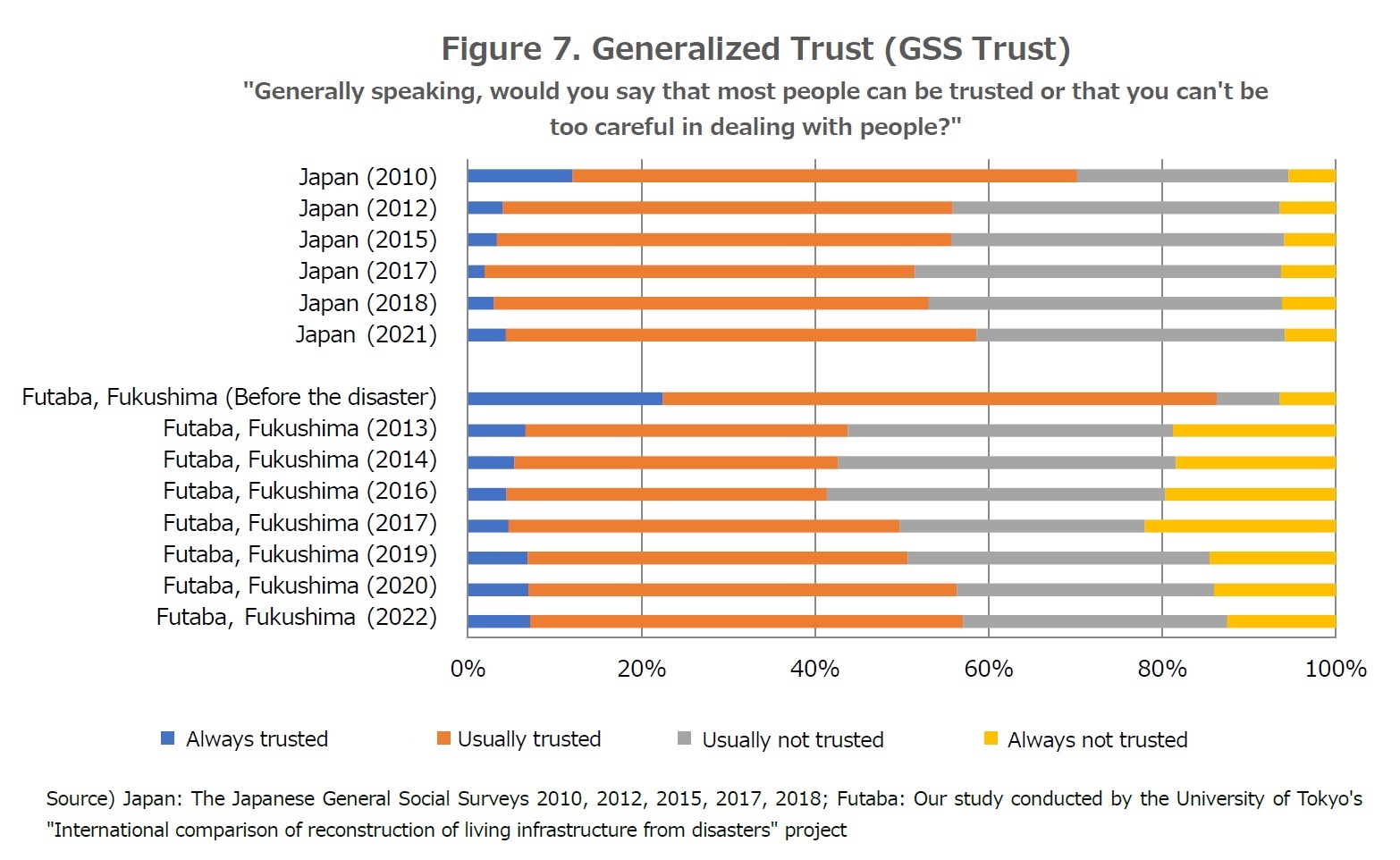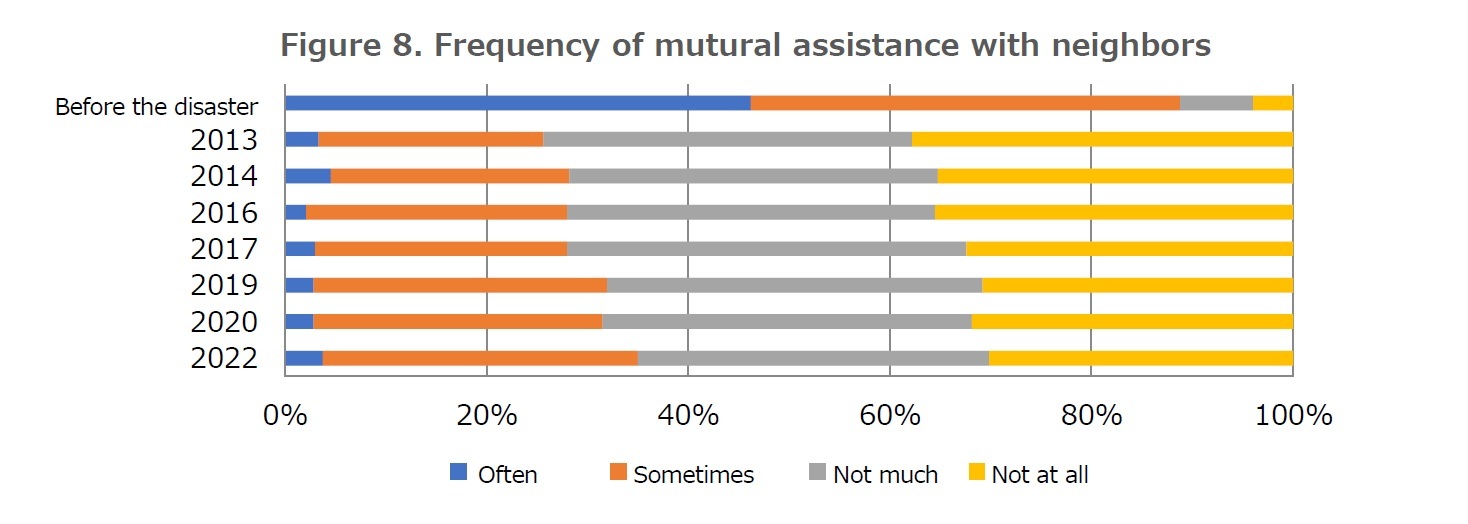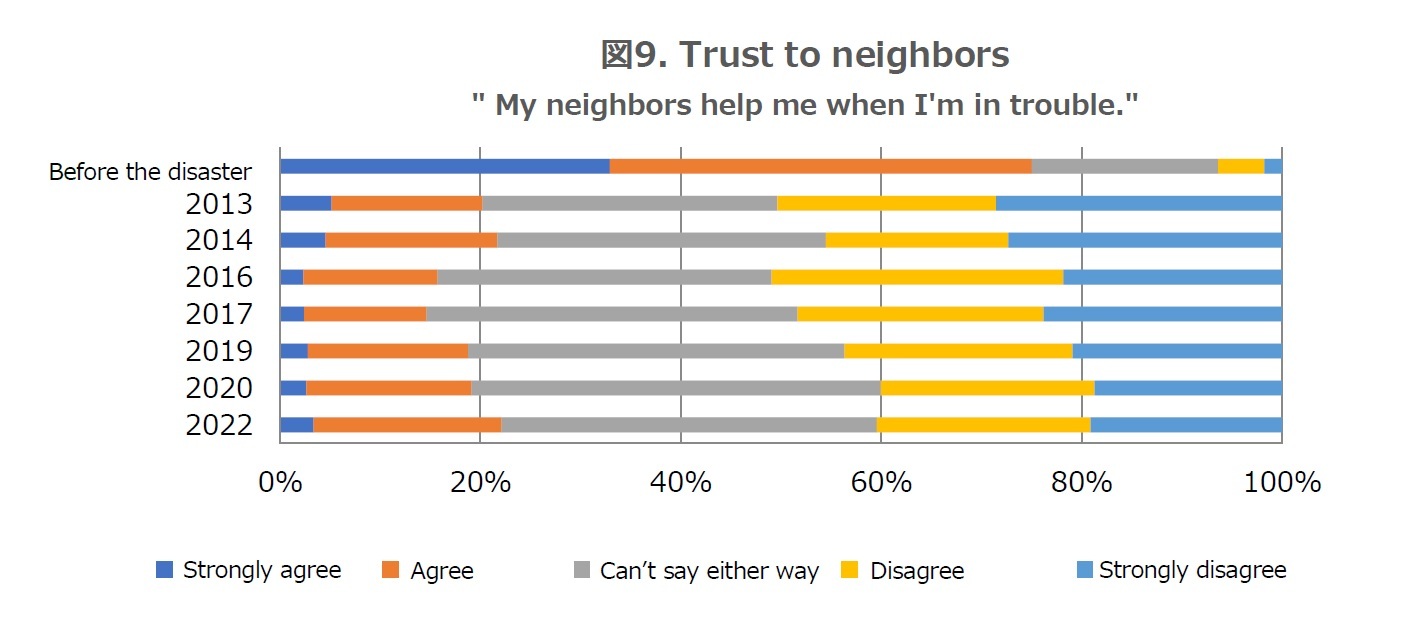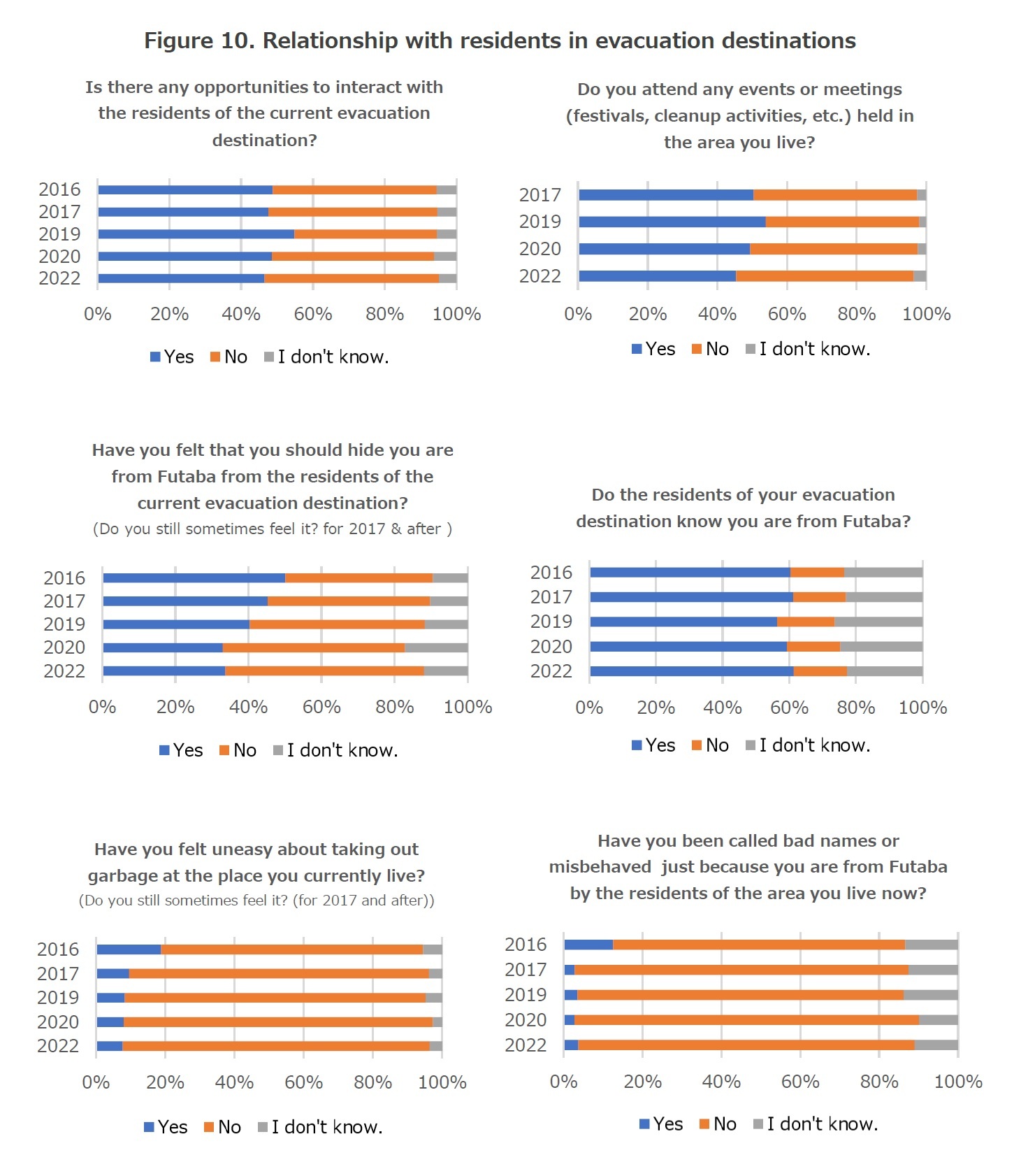- NLI Research Institute >
- Life >
- Summary Results of the 7th Survey of Nuclear Disaster Evacuees from Futaba, Fukushima-The First Survey since the Start of Return*-
Summary Results of the 7th Survey of Nuclear Disaster Evacuees from Futaba, Fukushima-The First Survey since the Start of Return*-
Damage, Living Environment, and Reconstruction under the Great East Japan Earthquake
Insurance Research Department Keiko Iwasaki
Font size
- S
- M
- L
3――Change in social capital
There are several indicators that are commonly used to measure social capital, but we focus on three items here. First, we check the level of "generalized trust" using GSS trust question, which is one of the most commonly used social capital measures. As shown in Figure 7, generalized trust among Futaba residents had been decreasing from 2013 to 2016 (Portion of those who think people can be trusted had been decreasing). However, since 2017, the portion of those who thinks people can be trusted has been gradually increasing (See Figure 7). The overall distribution is almost same as that of Japan as of 2019. On the other hand, Since Futaba had very high generalized trust level before the disaster, recovery to its original high level would take much longer time.
4 Iwasaki, K., Sawada, Y., Aldrich, D., 2017. Social Capital as a Shield against Anxiety among Displaced Residents from Fukushima. Natural Hazards 89.
4――Building relationship with residents at evacuation destinations
5―― Summary of the findings from the seven rounds of surveys
(2) In particular, there was a possibility that mental health of those who had lived in temporary shelters for long time was in a serious condition. However, currently, even after many of the residents have already moved from temporary shelters to public reconstruction housings, mental health of residents in public reconstruction housings and those who live in post-disaster public-funded rental accommodation is in a serious condition, and continuous mental health support is necessary.
(3) As to changes in income and health condition caused by the disaster, we find that the greater the extent of decrease or deterioration is, the greater the degree of decline in individual well-being tends to be. This implies the necessity of sufficient compensation to recover the original state of survivors’ well-being5.
(4) The disaster has weakened social capital of Futaba residents, and recovery may take very long time.
(5) Keeping in touch with people who had been friends from pre-disaster time and participating in hobbies and volunteer activities after the disaster may help people maintain good mental health6.
(6) Though relationship building with the residents of the evacuation destinations show some progress little by little, the progress is subtle and it is still an important challenge evacuees are facing.
(7) Aggravated present bias (procrastination tendency) due to disasters can lead a decline in mental health condition, but policies that promote interaction among residents and encourage good health behaviors can prevent such a decline7.
These results have been presented in international and domestic academic conferences. Also, these results have been published in international academic journals. Furthermore, a book, Fukushima Nuclear Disaster and Mental Health was published from Nippon hyoron sha in March 2021. We intend to continue our analysis and contribute to improve disaster preparation/rehabilitation policies.
Participants of our surveys are approximately 23% of households of Futaba and the results do not represent all Futaba residents. Since the survey was conducted after a major disaster, the characteristics of respondents may be very different from general surveys and there is a possibility that our data do not show the overall Futaba trend without any bias. Therefore, we need a special caution in interpreting the results, and any definitive judgments based solely on these findings should be avoided.
5 Iwasaki, K., Lee, M.J., Sawada, Y., 2019. Verifying Reference-Dependent Utility and Loss Aversion with Fukushima Nuclear-Disaster Natural Experiment, Journal of the Japanese and International Economies 52, 78-89.
6 Iwasaki, K., Sawada, Y., Aldrich, D., 2017. Social Capital as a Shield against Anxiety among Displaced Residents from Fukushima. Natural Hazards 89.
7 Sawada, Y., Iwasaki., K., Ashida, T., 2018. Disasters Aggravate Present Bias Causing Depression: Evidence from the Great East Japan Earthquake, CREPE DISCUSSION PAPER NO. 47.
Overview of the implication about the relationship between damage and present bias is available at page 6 of the report below: Keiko Iwasaki (2020.3.11) The 5th Survey of Nuclear Disaster Evacuees from Futaba, Fukushima, Summary of Results 2019, NLI Research Institute Report. (https://www.nli-research.co.jp/files/topics/63949_ext_18_0.pdf?site=nli, Accessed on Jan 10, 2023)

03-3512-1882
レポート紹介
-
研究領域
-
経済
-
金融・為替
-
資産運用・資産形成
-
年金
-
社会保障制度
-
保険
-
不動産
-
経営・ビジネス
-
暮らし
-
ジェロントロジー(高齢社会総合研究)
-
医療・介護・健康・ヘルスケア
-
政策提言
-
-
注目テーマ・キーワード
-
統計・指標・重要イベント
-
媒体
- アクセスランキング





















